Creating Perfection : A musical breakdown of Allison Williams' symphonic horror story
WARNING: Spoilers from The Perfection are discussed in this article.
“The obsessiveness or the obsessions in the classical music world are something that rings true to anybody who had to sit and practice for hours on end,” says Paul Haslinger, a composer behind Netflix’s The Perfection.
The streaming distributor kept its dizzying horror-thriller from director Richard Shepard largely a secret, due to the complex web of spoilers that threaten to unravel upon any form of discussion, but this weekend’s premiere brings to light its dark tale of two musicians’ mission to achieve the unachievable: perfection.
Allison Williams (Get Out) stars as Charlotte, a troubled cello prodigy who, after the death of her mother, seeks out Elizabeth (Dear White People‘s Logan Browning), the new star player at her former school, the Bachoff Academy. Their encounter sends both women down a path with its own shocking surprises.
It’s a film with lots of twists that play out through the narrative turns, shifting camera angles, and the very fabric of the ominous score. Haslinger, who studied music in Austria, recalls reading Elfriede Jelinek’s The Piano Teacher in school, a book “about an S&M relationship between a piano teacher and her student.” He says, “It was a parallel world but utterly relatable.” The Perfection, he adds, “was a more extravagant version of that.”
To unpack the forces at play, Haslinger and fellow composer on the film, Rolfe Kent, unpack their soundtrack, which is full of its own deceptions.
“Charlotte’s Theme”
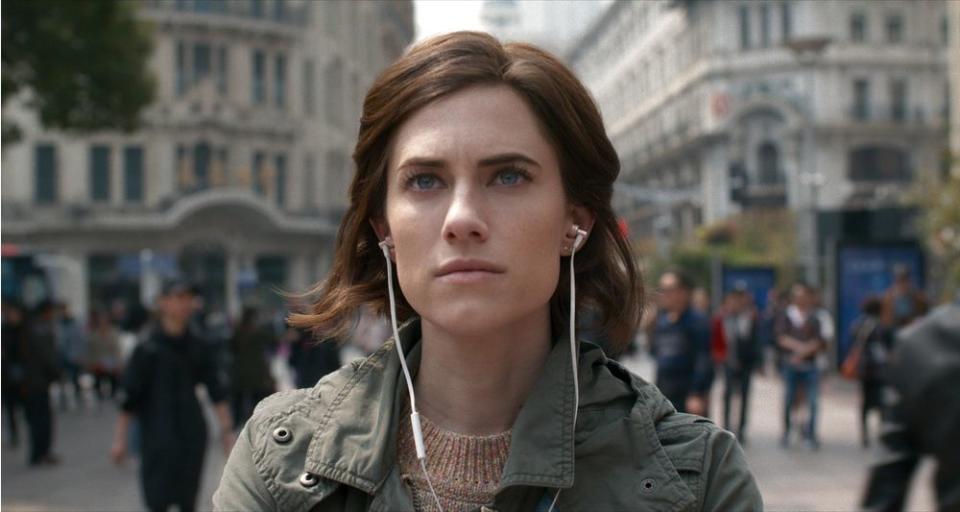
A harp and the strumming of strings lay the foundation for a lonely piano line. It slides between keys, while leaning into harmonic dissonance as Charlotte stares at the dead body that once held her mother. Flashes of her past career as a budding cellist attack her mind before we cut forward to find her in China.
The piano feeds the sense of unease as she spots a poster for the one she’s searching for, the cellist from her former academy who became an international success while she gave up everything to take care of her ailing mother, thereby giving way to the first twist from The Perfection.
“When they were looking basically for a composer to come in, I submitted a demo and there was a piano piece on it,” Haslinger explains of the opening theme. “They tried that piano piece when she reunites with her teacher. She walks through Shanghai and she sees the poster and there’s a simple piano line playing there. Richard responded to that and that became the [melody]. A lot of the rest of the film is more or less ‘Charlotte’s Theme.’ I originally wrote another opening, but he liked that melody so much, so I refashioned the opening using this melody, basically, as the core element for it and constructing the key around it.”
Dueling celli
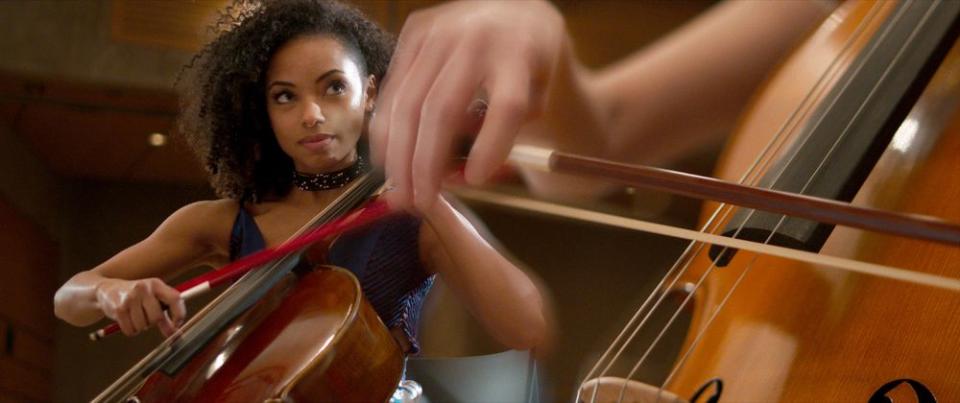
Haslinger came into the production later than usual, while Kent, a frequent collaborator of Shephard, wrote a series of original compositions for cello to play in the beginning of the film. One such piece was the cello duet between Charlotte and Liz, a frenetic melody that still throws the listener off balance with minor chords and striking dissonance, while the fast fingering of the strings mirrors the sexual tension building between the women.
“The opening duet was designed to feel competitive yet fiery and exciting,” Kent wrote to EW over email. “Reluctantly pushed together, each of these virtuoso players is seeking to play as perfectly as possible, but there’s an ongoing tension needed, a sense of being close to the breaking point; the music has to tease us with that possibility, while drawing the viewer in to the energy, virtuosity, and sweat of the performance.”
Mozart’s “Requiem”
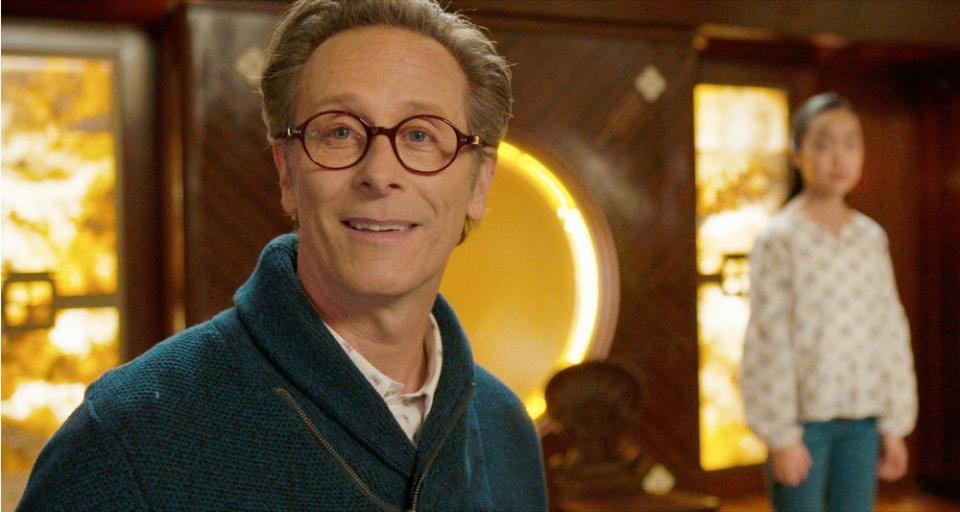
A “needle drop” is a preexisting piece or song played at a specific point in a film. The first in The Perfection is the “Casadesus: Cello Concerto in C Minor,” which comes with its own slight twist. The piece was credited to J.C. Bach but certain music scholars credit Henri Casadesus for writing it in the style of J.C. Bach. The young cellists can be seen playing this piece at the beginning of the film in the hopes of landing a spot at Bachoff.
The second needle drop is “Requiem in D minor, K. 626” by Wolfgang Amadeus Mozart, something Haslinger knows very well. Anton (Steven Weber), Bachoff’s outlandish instructor, is always associated with different movements from this piece, beginning when his tour of the academy’s private concert space. Haslinger remarks how the “Requiem” “lended itself to the grandeur and ridiculousness of Anton in the context of this film.”
“Dies Irae”
In Requiems, the “Dies Irae” movement denotes the “day of wrath” in the Mass for the Dead. It’s this movement from Mozart’s “Requiem” we hear playing over the car stereo as Anton drives up to the academy at night and sees Liz with a special surprise in the back of her trunk.
“I fear I am writing a requiem for myself,” Mozart is quoted as saying in reference to his “Requiem.”
“The ‘Requiem’ is an interesting piece because Mozart wrote it, basically, before he was dying and [it] was finished by a student of his,” Haslinger says. “It was a work-for-hire and it was a rush job. It’s interesting what [the student] picked because he stayed pretty close to some models for it that you can find with previous compositions and previous pieces, and yet it’s become one of [Mozart’s] most celebrated and most famous pieces. So, the piece in itself has a twisted story. Now I don’t know whether Richard was aware of that when he picked it. I think he picked it for effect more than for the history, but Anton stood for a mix of qualities and obsessions and all the other things, some a bit clique, that come with the classical music world and because this piece is such a mix of all of that I think it just fit really well and the individual pieces in the requiem have this quality, they serve quite a few different elements.”
Electronic infusion
While the first half of the film largely uses classical and acoustic music, Haslinger noted Shepard wanted the second half, “where things get more twisted,” to have “a more current and electronically infused approach.”
“My job was to retain the classical- and cello-based elements, but also to give it another dimension in sound and bring it more over into a current production feel,” the composer explains. “It was a necessary shift, but it was also a tight balance because it’s a very detailed and choreographed film. So, everything becomes a balancing game and a little too much is a lot too much and so it took a moment to find the right balance for it.”
A stressful solo
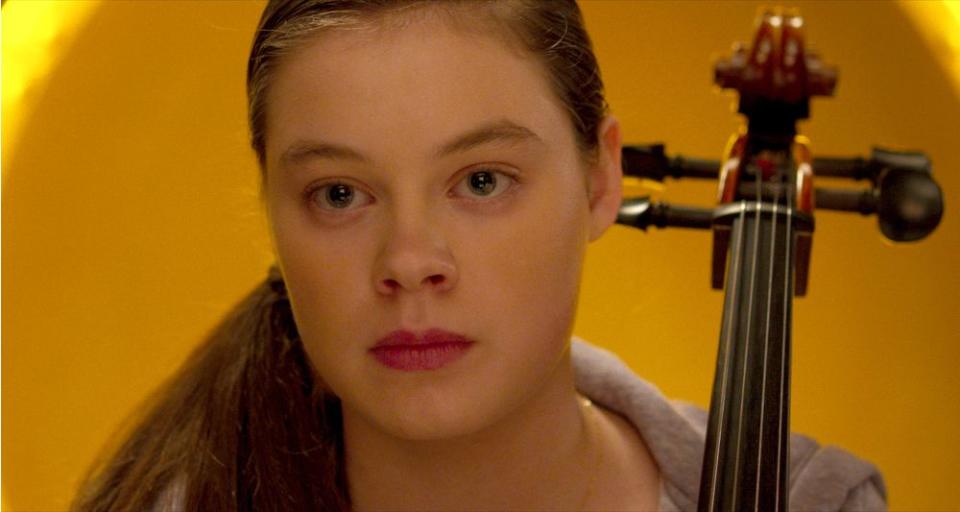
Charlotte has nightmares about the solo sonata Anton forced her to play on his private stage. It’s the biggest of all the twists in The Perfection and one that gets to the inner darkness of artistry wherein musicians forget their passion for the craft and instead kill themselves to achieve perfection.
“In this piece, I wanted to bring you into a world you’d perhaps not considered — the intensely physical world of the cello,” Kent says of the sonata, which Charlotte plays in the past as a Bachoff student and again as an adult in the final scenes of the film. “I remember seeing Ravel’s ‘Bolero’ and noticing how hard the cellos and basses were working with that intensely physical piece. It’s incredibly visual and visceral, and I wanted to show that kind of effort in this piece; you have to dig in and sweat to make the cello work with these fast musical rhythms. It’s very demanding of the musician. Then I contrast it with a sudden shift into lyrical moments so the performer has to change gears on a dime and go from all-out sprinting to fluidly soaring, and then soaring ever higher, making it a fascinating, dangerous thing… with consequences.”
Hip-hop break
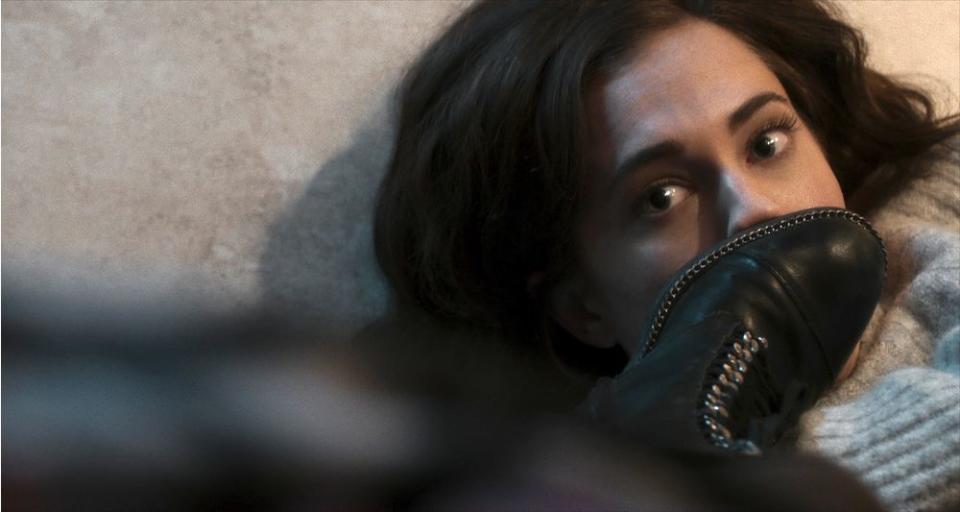
With all the narrative turns and surprises that arise the closer you get to the finale, Haslinger wanted to continue throwing the audience for a loop musically, hence the choice to feature hip-hop, a drastic departure from the classical space that became so toxic for the characters.
“When I came in,” Haslinger says, “the score was relatively straightforward: acoustic and then there were these juxtapositions between the song choices and the needle drops. The job for me, then, was to create more elements on the score side that creates variety and makes these jumps seem like they’re part of an overall concept of being allowed to jump.”
The scene in which Charlotte explains everything to Liz could’ve been a needle drop, he says. Instead, it’s “scored to sound non-orchestral, basically an electronic piece.”
“That was a stylistic decision,” he says. “We said we’re going through all these big fights and action sequences, and we wanna throw people for a loop because, A, we’re revealing something we never thought of before, but, B, it’s good when this side steps. This shifting over to the left or the right doesn’t only happen with songs, but it can also happen in the score. To me and Richard, that was a more modern, current approach of trying to get that effect. That way, these shifts occur throughout the movie in a variety [of ways], so sometimes its a strong shift with the hip-hop piece and sometimes it’s a gradual shift like in the application of the electronic elements in the score, or if you do a stylized piece like in the scene when they finally confess to each other.”
The result: perfection.
Related content: